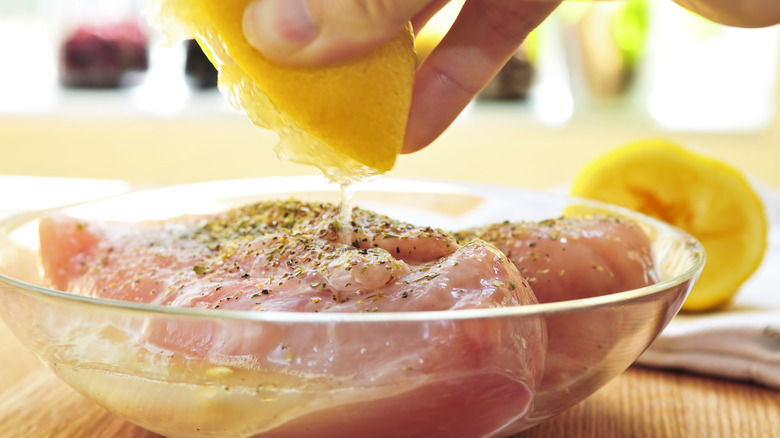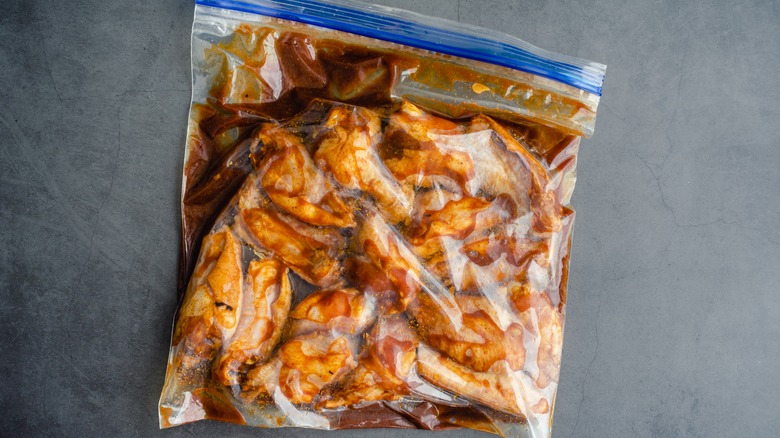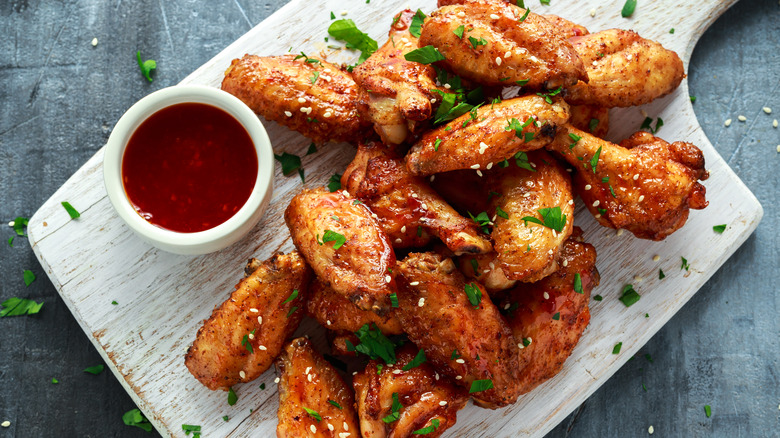How To Marinate Raw Chicken Without Jeopardizing Food Safety
Marinating chicken is one of the best ways to infuse flavor into this versatile protein. Plus, it's an easy technique that even the most unsure home cook can master. A marinade typically consists of three essential components — fat, acid, and spices (often including salt or sugar). The fat, typically oil, helps keep the chicken moist and juicy. The acid could be vinegar or citrus juice, and it helps break down the meat to tenderize it. Then, the spices and salt can infuse flavor into every bite.
However, any marinade needs to be treated safely as it comes into contact with raw chicken. First, don't use any sort of metal container or bowl to marinate your chicken. The metal can interact with the acid as it sits. Over time, exposure to acid (like vinegar or citrus) can weaken the metal and then leak into food. Instead, use a non-reactive container such as plastic or glass fitted with a tight lid. The best way to marinate raw chicken without jeopardizing food safety is to use a non-reactive container or, even better, a disposable zip-top plastic bag.
A zip-top bag is the easiest solution for food safety
Raw chicken can contain harmful bacteria such as salmonella. That is why it needs to be handled with care during the marinating process as well as cooked to the proper internal temperature before serving. Do not marinade the chicken at room temperature on the kitchen counter. Once inside the non-reactive container, it must then be placed in the refrigerator at or below 40 degrees.
The benefit of using a zip-top bag is that you can easily squish and manipulate the chicken inside the bag to make sure all sides of every piece get bathed in the delicious marinade. If you use a container, just be sure to flip the chicken periodically during the marinating time. Marinades can be used for as little as a couple of hours or up to 24 hours, like this recipe for grilled lemongrass chicken. Finally, don't forget the thermometer. It is essential to cook the chicken to an internal temperature of 165 degrees for food safety.
Safely using marinade as sauce for cooked chicken
Once it is time to cook the chicken, it is essential to dispose of the used marinade properly. When using a resealable bag, this is a breeze since you can just dump the whole thing into the trashcan. If you used a container, carefully pour the used marinade down the sink. Even if you are diligent and avoid any splashing, you're still going to want to clean the sink thoroughly just to prevent cross-contamination. However, sometimes the delicious flavors of a marinade are just so irresistible that you want to find ways to use it, even after the chicken is cooked. Don't worry; there's an easy solution.
If you love the flavor combinations in a particular marinade, you can always set aside a little bit before you add the raw chicken. As long as this portion doesn't come in contact with the uncooked chicken, it is safe to use as a finishing sauce or even a dipping sauce. Another option would be to double the recipe for the flavorful marinade and set half of it aside for after the chicken is cooked. No matter what you choose, it is important not only to separate but also clearly label the marinade set aside for cooked chicken.



